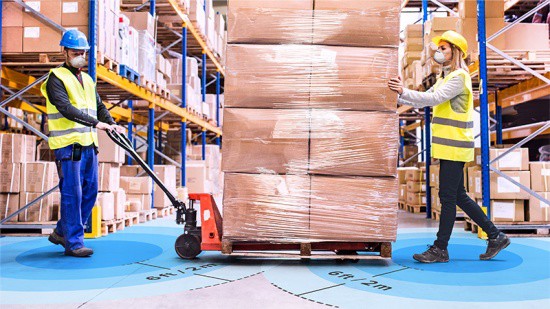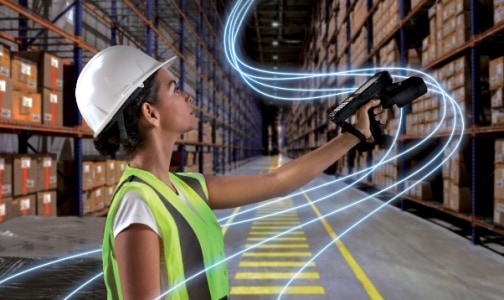Warehouse operators worldwide are spending are spending heavily on technologies that support workforce augmentation and workflow automation amid pressure to modernise as a result of the current COVID-19 pandemic.
Indeed, more than nine in 10 operators in all regions - including Asia Pacific- indicate they will increase the use of wearables, mobile printers and rugged tablets over the next few years, along with mobile dimensioning software that automates parcel and carton measurements.
In addition, 27% of warehouse operators globally and in APAC have already deployed some form of autonomous mobile robots (AMR) today. Within five years, that number is expected to grow to 92% in APAC and 90% worldwide.
These are some of the key highlights of a new Warehousing Vision Study conducted by Zebra Technologies between January and February 2022. The survey polled more than 1,500 warehouse decision-makers and associates around the world, including Australia, China, India, Japan and Singapore.
“Labour shortages resulting from the recent global events are straining the regional and global supply chains, presenting a fulfilment gap across many sectors,” said Aik Jin Tan, APAC Vertical Solutions Lead for Manufacturing, Machine Vision/Fixed Industrial Scanning, Zebra Technologies. “This highlights the importance of a resilient and flexible supply chain. Hence it is encouraging to see warehouse operators increasingly adopt modern technologies to augment their workforce and mitigate these labour challenges.
Warehouse associates are also becoming more comfortable with their employers’ use of advanced technologies. Less than half (45%) globally said their employers have increased wages or offered bonuses amid labour constraints, yet most (82%) feel positively impacted by the situation. This trend continues in APAC, where nine in 10 warehouse associates report a positive outlook despite only 34% reporting that employers increased renumeration.
Employers are improving work conditions in other ways, such as giving them more technology to use on the job and leveraging technology to create more flexible work shifts. In fact, more than nine in 10 warehouse associates around the world agree on some level that technology advancements will make the warehouse environment more attractive to workers, even in times like these when supply chains are strained, demand is surging, and there’s increasing pressure to meet tighter deadlines.
Warehouse challenges a catalyst for change
The survey results showed warehouse operators are having a harder time getting customer orders out the door on time than they did three years ago, and they’re struggling to maintain inventory accuracy and visibility.
They also admit they’re expected to deliver orders faster than ever to keep up with the on-demand economy, with rising transportation costs taking their toll on over 40% of warehouse operators spanning manufacturing, transportation, wholesale distribution, logistics and retail. This may not be surprising considering that respondents indicate their shipping volumes have increased more than 20% on average over the past two years.
However, warehouse operators are viewing these challenges as catalysts for change and growth. Between now and 2025, over eight-in-10 expect to increase the number of stock-keeping units (SKU) they carry and the volume of shipped items. They also plan to expand returns management operations, offer more value-added services, and increase their physical footprints, with both the number and size of warehouses increasing.
While 61% of warehouse operators globally also want to increase headcount within the next year to right-size their workforces, they admit finding (55%) and training (54%) workers in a timely manner remain big challenges. This is especially true in APAC where 53% report difficulty finding workers and 59% indicate training is challenging. As a result, over eight in 10 decision-makers around the world agree they will have to rely more on automation in the future.

Augmenting the Workforce with Automation
While most warehouse operators worldwide will deploy AMRs for person-to-goods (P2G) picking, material movements and other automated inventory moves, more will invest in software that helps automate analytics and decision-making. In APAC, 95% of decision-makers indicated this willingness to invest in such software in a bid to raise worker effectiveness and efficiency and reduce labour costs, outpacing the global average by just a bit (94%).
“Automation is allowing businesses to create different types of work environments and allowing people to take on roles that are more interesting, fulfilling and career elevating,” said Christanto Suryadarma, Southeast Asia (SEA) Sales Vice President, Zebra Technologies Asia Pacific. “As a result, 56% of APAC decision-makers believe that the most important labour initiative is to reduce unnecessary tasks so associates can focus on more customer-centric work and utilize their workforce more efficiently. By investing in RFID technologies that improve situational awareness, automate workforce and task management like RFD90 and FX9600, decision-makers can effectively scale warehouse operations and keep up with the on-demand economy.”
Automation increases job satisfaction and worker retention rate
Contrary to popular opinion, the study respondents believe automation may help keep more people in their jobs and fill empty ones. Nearly eight in 10 warehouse associates in APAC (79%) and globally (78%) say walking fewer miles per day would make their jobs more enjoyable, even if they had to pick or handle more items, and many strongly believe AMRs could make warehouse jobs less stressful.
Decision-makers should take note; only 36% of those surveyed in APAC and 41% worldwide completely agree implementing warehouse technologies such as robotics and devices can help attract and retain workers even though most associates:
- who work alongside AMRs today confirm they have helped increase productivity and reduce walking/travel time (83%), reduce errors (73%), and enable advancement to new roles or opportunities (65%);
- claim they are more likely to work for an employer that gives them modern devices to use for tasks versus an employer that provides older or no devices (83%).
“Though automation has been a priority for companies for years, it has increasingly become an urgent investment area due to unexpected disruptions and seasonal peaks which requires the workforce to scale quickly,” added Tan. “Interestingly, associates feel more strongly about this than warehouse operators right now, which further adds to the business imperative of an augmented workforce in the warehouse environment.”
Five-year technology outlook
Globally, 85% of decision-makers say they have implemented mobility so front-line workers can capture each inventory move they make, and most feel they are optimising the use of their devices to fit the task, safety, and ergonomics.
However, warehouse associates (84%) and decision-makers (79%) are concerned they will not meet their business objectives unless more technology investments are made to improve operations, with associates in the transportation (92%) and logistics (88%) sectors feeling most strongly about this need.
As a result, more than six in 10 decision-makers said they will invest in technologies that increase inventory and asset visibility within their warehouses and overall visibility throughout supply chains over the next five years.
Nine in 10 expect their use of sensor-based technologies such as radio frequency identification (RFID), computer vision, fixed industrial scanning, and machine vision systems to become more prevalent over the next five years.
As businesses invest in advanced technologies that enable more visibility, real-time guidance and data-driven performance, they’re focusing on increasing team productivity and better utilisation of assets, equipment and people, which equates to improved worker well-being and overall market competitiveness. However, it will become critical for warehouse operators to become more thoughtful about how they implement and integrate technologies as they increasingly digitalise workflows and scale systems.



